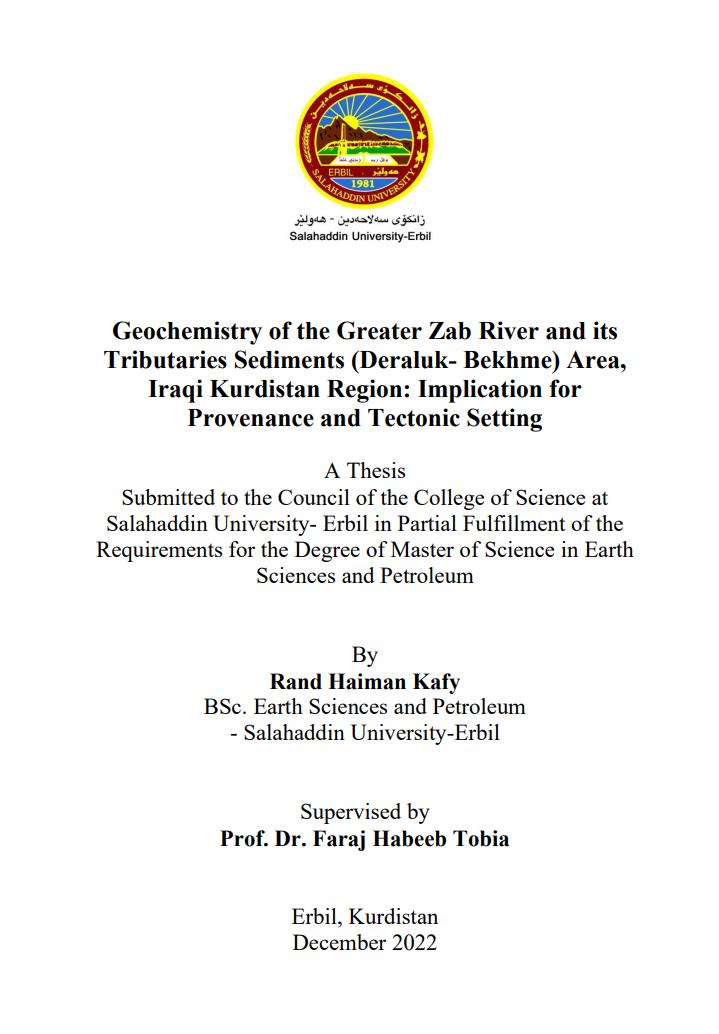
Abstract
Active sediments along a 90 km section of Greater Zab River (GZR) in Kurdistan Region/ Iraq were analyzed for their major, trace, and rare earth elements contents to investigate their provenance, weathering at the source area, and tectonic setting. The enrichment of sediments with transition elements (Co, Cr, and Ni), the bivariate (Zr/Sc vs Th/Sc, K2O vs Rb, and Al2O3/TiO2 vs SiO2adj) plots, and elemental ratios (Th/Sc, Th/Co, Th/Cr, La/Sc, and Eu/Eu*) suggest the GZR sediments are derived from basic igneous rocks. However, the Al2O3/TiO2 ratio and bivariate TiO2 vs Zr, suggest some contribution of intermediate rock sources. The Chemical Index of Alteration (CIA), Plagioclase Index of Alteration (PIA) and the A-CN-K ternary diagram, in addition to Th/U and Rb/Sr ratios, suggest a low degree of weathering for the source materials. Low CIA reflects limited or the near absence of chemical alteration, and thus indicates arid and/or cool conditions. The Index of Compositional Variability (ICV) indicates very low compositional maturity. Tectonic discrimination diagrams log (K2O/Na2O) vs SiO2/Al2O3 ratios, log (K2O/Na2O) vs SiO2(adj), and La-Th-Sc ternary diagram, indicate the studied sediments plot in the oceanic and continental island arc. These tectonic settings are consistent with the northeastern tectonically active uplands closely associated with the subduction zone of the colliding Arabian and Iranian Plates. The trace element concentrations in the +63 μm, the fraction has the highest concentration of Sc, V, Co, Ni, Zn, Zr, Nb, Hf, U, Th, and Y. A decrease in these element concentrations can be observed towards the higher grain size fractions. Rb and Sr are concentrated in the +250 μm fraction. The trace element analyses could be used for mineral exploration for the Pb-Zn mineralization in the catchment area of Ava Sheen River and Cr- mineralization in the catchment area of Haji Bag River.
